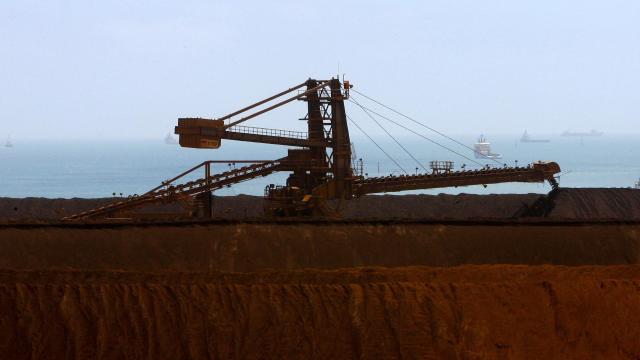An Aboriginal group is accusing an Australian mining giant of destroying priceless historical materials and keeping their destruction secret for decades, claiming that some artefacts were quite literally thrown into the trash.
The Wintawari Guruma Aboriginal Corporation (WGAC), a group representing the Eastern Guruma people, said in a submission to the Australian Parliament that Eastern Guruma elders were kept in the dark about the existence and destruction of the artefacts by Rio Tinto, the world’s second-biggest mining company.
The submission was lodged as part of an ongoing investigation into Rio Tinto’s mining activities and how it’s treating Aboriginal heritage sites. Last year, Rio Tinto blasted through rock shelters in a gorge in Western Australia in order to expand an ore mine. The company had extracted some artifacts from the 46,000-year-old site in 2014, including a belt made of human hair that had DNA links to modern Aboriginal groups and a 28,000-year-old bone tool, one of the oldest types of these tools found in Australia.
Given how extraordinary these findings were, architects on the expedition recommended that more work be done to excavate the area. But despite these recommendations and widespread local opposition to doing more damage to the site, Rio Tinto went ahead and blew it up anyway, claiming that it was simply too hard to remove the objects.
“Any site dating from the last Ice Age is significant because people were using these sites as refuges, so we can get a sense of how they were reacting to glacial conditions,” Duncan Wright, a specialist in Indigenous archaeology at Australian National University, told Reuters. “If you had sites of this significance in England, they would be protected — it’s like destroying Stonehenge.”
Rio Tinto has proven that it doesn’t seem to give a shit about cultural preservation, but this latest development is still jaw-dropping. In the filing, WGAC said that a Rio Tinto subsidiary had done archaeological work on another 18,000-year-old site as it was working on another ore mine in the mid-1990s. Rio Tinto had gotten approval from the government to mine the area on the condition that it would make sure it collected and saved materials from the site.
But artefacts salvaged from surveys done by a contractor that Rio Tinto hired were stored in bags in a rusted shipping container with holes in the roof that let water leak in.
“Bags were labelled, however this did not always correspond with their contents,” the submission said. Some of the artefacts were at first misplaced in the trash and then deliberately tossed away by Rio Tinto, according to the submission.
“So little was the respect for either the state’s conditions, or for the cultural heritage that was destroyed on a massive scale, hundreds of Eastern Guruma cultural artefacts ended up in the bin,” the submission continues. “It is WGAC’s view that the accidental, and then deliberate, discarding and destruction of Eastern Guruma cultural material was never disclosed to the Eastern Guruma people. It is a secret that has been kept by [Rio Tinto’s subsidiary] and the government for some 25 years.”
While the government has standards in place for how mining companies like Rio Tinto need to go about handling and treating Aboriginal sites, there’s actually a separate piece of legislation in place just for this specific mine that insulates Rio Tinto from oversight and legal action from Aboriginal people. The WGAC said in its submission that that specific law needs to be reconsidered in light of its allegations.
Fortunately, there has been some karma for Rio Tinto. The outcry over last year’s explosions combined with the worldwide Black Lives Matter movement and a renewed reckoning over how terribly mining companies treated Aboriginal people put a lot of pressure on the company to respond. Rio Tinto issued an apology last summer only for an executive to later clarify that the company wasn’t actually sorry for destroying the site and the artefacts, but mostly just for making people upset. Last fall, though, three Rio Tinto executives left the company over the controversy.
It remains to be seen whether or not the company will face similar pressure over these new allegations.
“Only now we find out what really happened, that no one cared for our artefacts, our Old People’s things,” one elder and WGAC board member is quoted in the submission as saying. “It hurts us that our heritage was thrown in the bin.”
